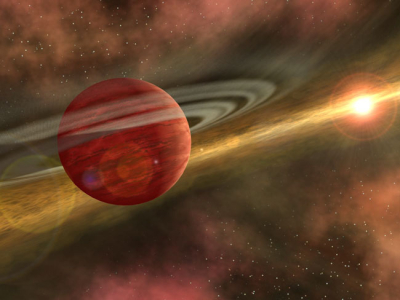What is a planet beyond our solar system called?

A planet beyond our own solar system is referred to as an exoplanet. While most exoplanets orbit other stars, there are also free-floating exoplanets, called rogue planets, that are not tethered to any star and orbit the galactic centre.
"Blind" surveys
Traditionally, ground-based means have been employed to detect exoplanets. Astronomers use "blind" surveys to look for stars in the sky with the potential for housing giant planets, which can then be directly imaged from Earth based on the stars age and distance. This technique, however, has a very low yield, meaning that exoplanets are detected very infrequently. Astronomers have developed a new technique to detect exoplanets whose portraits can be taken using large ground-based telescopes on Earth. They have tasted success with this method and the result is the direct image of a Jupiter-like gas giant - HIP 99770 b-132.8 light years away in the Cygnus constellation. The study behind this success was published in the journal Science in April.
Combining astrometry and direct imaging
HIP 99770 b is the first exoplanet detected by combining astrometry and direct imaging. While two observatories on Hawaii Island did the direct imaging, the astrometry- responsible for measuring the position and motion of HIP 99770 b's home star - came from Gaia space observatory and its predecessor Hipparcos.
Precision astrometry is the method of detecting the movement of stars. This allows researchers to identify those stars that are tugged at by the gravitational pull of an unseen companion like a planet. A picture of the star systems that are close enough is then captured to directly image.
The detection of HIP 99770 b serves as proof of a concept developed by an international research team. They were also able to determine that this exoplanet is 14-16 times the mass of Jupiter and orbits a star that is almost twice as massive as our sun. It receives a similar amount of light as Jupiter as its host star is far more luminous than the sun. The team characterised the nature of HIP 99770 b's atmosphere and showed that the planet's atmosphere has signs of water and carbon monoxide.
This new method of searching for exoplanets is believed to be a major improvement to the existing, traditional method of "blind" surveys. The researchers also hope that this new approach would lead to further advances that eventually lead to the discovery of an Earth-twin around a nearby star.
Picture Credit : Google